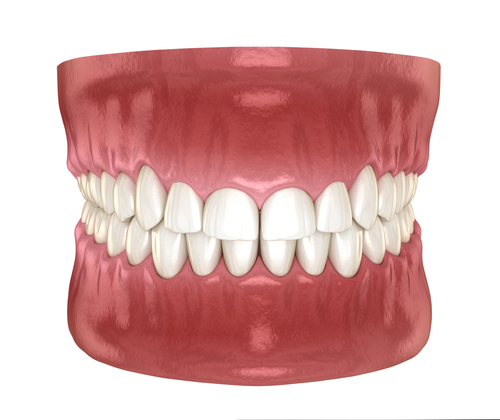Your smile is the first thing people notice about you, and dental crown lengthening can help enhance it. The surgical procedure involves removing excess gum tissue to expose more of the tooth’s surface. This is done to improve your teeth’ appearance or prepare them for restorative procedures such as getting a crown or bridge. This blog will dive into everything you need about dental crown lengthening. From understanding its purpose and who can benefit from it to the process and what you can expect during recovery. We will also discuss possible risks and complications associated with this procedure and how to mitigate them. Lastly, we will help you determine if dental crown lengthening is the right choice for you by providing factors that should be considered before making a decision.
Understanding Dental Crown Lengthening
Dental crown lengthening involves reshaping the gum line to expose more tooth surfaces for proper restoration. This standard procedure, often performed by a periodontist using a local anesthetic, corrects gummy smiles or uneven gum lines by removing gum tissue, bone, or both.
Definition and Purpose
Reshaping the gum line allows for more tooth exposure, aiding dental restorations and preventing decay. It’s also a choice for cosmetic dentistry, with treatment plans tailored to oral health and desired results.
Who Can Benefit from It?
Individuals with excess gum tissue covering their teeth, those needing new dental crowns due to tooth damage, and those with a gummy smile can all benefit from dental crown lengthening. This procedure is also helpful for patients facing issues with dental restoration. It’s recommended that a periodontist assess the affected tooth.
The Process of Dental Crown Lengthening
A local anesthetic is used to numb the affected area for comfort during the procedure. The dentist or periodontist removes a small amount of bone and gum tissue to expose enough tooth structure. After the surgery, the surgical site is bandaged, and aftercare instructions are provided, promoting healing and regeneration of gum tissue and underlying bone.
Preparing for the Procedure
Before the procedure, a local anesthetic may be used, and patients should follow pre-operative instructions. They are encouraged to eat soft foods, avoid strenuous activity, and rinse their mouth with an antimicrobial mouth rinse.
What Happens During the Surgery?
The dentist or periodontist will make incisions to access the tooth roots during dental crown lengthening surgery. Excess gum tissue will be removed, and bone tissue may be reshaped if necessary. The goal is to create a natural gum line. Temporary crowns may be placed, and stitches can aid in healing.
Risks and Complications of Crown Lengthening
After dental crown lengthening, patients may experience swelling, discomfort, and minor bleeding. Avoiding hot foods, strenuous activity, and smoking is advised to mitigate risks. Pain medication, antibiotics, and ice packs may be recommended for managing discomfort. Most patients can resume normal activities within a few days, but adhering to post-operative care instructions is crucial for successful recovery.
Possible Side Effects
Facial swelling, discomfort, and minor bleeding may occur post-surgery. Using an ice pack helps reduce swelling. Over-the-counter pain medication can manage mild pain. Soft foods may be necessary, and following oral hygiene is crucial for healing.
Measures to Mitigate Risks
To reduce the risk of complications, following the prescribed medication regimen is essential. Good oral hygiene, gentle flossing, and attending all follow-up appointments are crucial. Avoiding smoking and promptly contacting the dental professional for concerns is also essential.
What to Expect After the Procedure
The healing process involves gradually forming new gum tissue and bone, improving oral health. Custom-made restorations like dental crowns ensure a natural-looking gum line. Regular dental follow-ups monitor the success of the procedure for long-lasting results.
The Recovery Process
Following dental crown lengthening, expect a healing phase lasting weeks. Swelling and discomfort are initially expected but managed with prescribed antibiotics. Adhering to post-operative care is crucial for optimal healing, including dissolving stitches within a week.
Tips for Quick and Smooth Recovery
Applying ice to the affected area minimizes swelling. Stick to soft foods and avoid strenuous activities during recovery. Use a particular mouth rinse for healing. Over-the-counter pain medication can help manage discomfort. Avoid smoking and strenuous activity to reduce bleeding.
Contacting Your Dentist
Contact your dentist immediately if you experience excessive bleeding or notice signs of infection like persistent fever, prolonged discomfort, loose bandage, or persistent pain despite medication.
When to Reach Out to Your Dentist Post-Procedure
Following dental crown lengthening, contact your dentist immediately for unexpected side effects, persistent bleeding, allergic reactions, intensifying discomfort, or unusual swelling, pain, or discharge. Prompt evaluation is essential for post-procedure concerns.
Regular Dental Check-Ups Post Crown Lengthening
After dental crown lengthening, regular check-ups ensure proper healing and maintenance. These visits monitor the area, address concerns, discuss oral hygiene, and maintain oral health. It’s crucial to maintain the health of your teeth and gum tissue.
Is Crown Lengthening the Right Choice for You?
Factors to consider before deciding on the procedure include your treatment plan, desired cosmetic results, and whether excess gum tissue affects your smile. Consult your dentist to determine if crown lengthening is necessary to restore your natural tooth structure and if it’s the best option.
Factors to Consider Before Deciding on the Procedure
Before deciding, consult your dentist about gum tissue removal. Understand risks, impacts on roots and bone, and the influence of affected area and bone tissue. Consider oral health impact.
Contact Palm Beach Periodontics Today
Dental crown lengthening is a valuable procedure that can benefit those in need. Whether you require it for functional or aesthetic reasons, this treatment can help you achieve your desired smile. It’s essential to consult with your dentist to determine if crown lengthening is the right choice for you, considering factors such as oral health, gum tissue, and overall dental goals. Remember to follow proper post-procedure care and attend regular dental check-ups to ensure the longevity and success of your crown lengthening. If you have any questions or concerns, don’t hesitate to contact us. They are there to support you on your dental journey.












